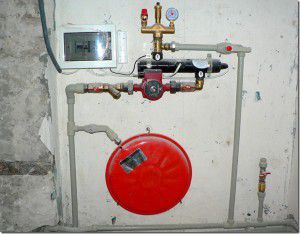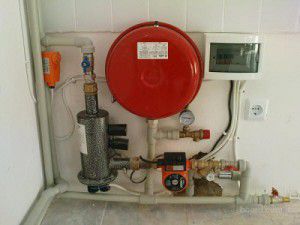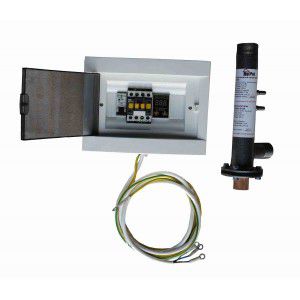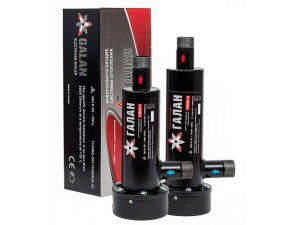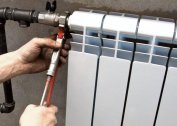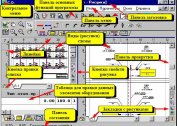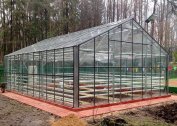The use of new technologies is a prerequisite for improving heating systems. This applies to innovative manufacturing materials and fundamentally different methods for producing thermal energy. Not the last place among the novelties is occupied by electrode boilers for home heating: the device, reviews about them will make it possible to form an objective opinion on the advisability of use.
Design features and types of electrode boilers
Electrode boilers for heating a private house operate using the principle of electron motion between two electrodes. As a result of this, the coolant is heated. In practice, this is feasible if several specifications are met.
The main one is the design features that distinguish electric electrode heating boilers from other similar system components. To create an appropriate reaction, the design must include the following components:
- Airtight housing. Its outer surface must be isolated from the inside to ensure safe operation;
- Electrode block. It is made of cathode and anode. When an electric current is supplied between them, the heat carrier is heated;
- A system of supply and return pipes for connecting to heating heating pipelines;
- The control unit through which the electrical connection is made.
Such an arrangement of an electrode heating boiler provides a relatively small size and weight of the structure. However, at the same time, it lacks the traditional elements that are typical for most models of gas boilers - an expansion tank, a circulation pump and a safety group. Therefore, reviews of electrode heating boilers indicate an increase in the complexity of the arrangement of the system. It is required to correctly select and install these components to ensure the operability of autonomous heat supply.
A modern electric electrode heating boiler can differ both structurally and by a set of functions. This must be considered when choosing models. So, the simplest consists only of a housing with an electrode heating unit without additional components. But besides this, the consumer has the opportunity to choose from the following design options:
- Single or three phase. It all depends on the required power of the equipment. So, a home-made electrode heating boiler with a power of less than 9 kW can be connected from a single-phase network. If this parameter is higher than 9 kW, a three-phase network will be required;
- Number of heating circuits. Some models can work both for heat supply, and for hot water supply of a house or apartment;
- The presence of a control unit. With its help, automatic power adjustment is performed depending on the water temperature.
It is noteworthy that household electrode heating boilers can only be used in closed systems. If there is no coolant in the area of its heating, equipment damage may occur.
Doing an electrode heating boiler with your own hands is best according to the factory drawings of a similar design. Otherwise, there is a high probability of incorrect or dangerous operation of the equipment.
Installation and operation of electrode boilers
After selecting the boiler, it is necessary to correctly calculate its power.To do this, you can apply the traditional principle that for 10 m² of space 1 kW of electrode boiler power is required for heating a private house. But this method is only effective with standard ceiling heights and good thermal insulation of the room.
To install the electric electrode heating boiler, you must correctly select its location. Another advantage is its small size. So, one of the most common models with a power of 6 kW has a length of 335 mm and a diameter of only 25 mm. The weight of the structure is 1.1 g.
For full-fledged work, in addition to knowing the structure of the electrode heating boiler, additional components will be required. These include an electronic temperature controller and an RCD unit. This will protect and automate the operation of the heating system.
Installation procedure for the electric electrode heating boiler:
- Read the instructions from the manufacturer.
- The diameter of the connected pipes to the heating pipes must coincide with the corresponding mounting units of the boiler.
- The direction of movement of the coolant is indicated on the body of the structure. It must match the actual in the system.
- Choose a coolant for electrode heating boilers.
The last point is very important, since the device will not work effectively with distilled water or antifreeze. It is recommended to use a special liquid with a high content of salts and additives. This will optimize the process of heating the coolant by creating additional electrical bonds in the liquid medium.
For normal operation of household electrode heating boilers, it is necessary to connect to an emergency source of electricity. It will make it possible to heat water for some time even after a power outage.
Overview of electrode boiler manufacturers
Despite the simplicity of the design - it is not recommended to make an electrode boiler yourself. This is due to the features of manufacturing technology. To ensure normal operation, it is necessary to choose the right manufacturing materials, as well as perform a number of complex engineering calculations.
Currently, there are several manufacturing companies engaged in the production of electrode heating boilers for a private house at a professional level. They monitor the quality of their products and provide warranty and post-warranty services.
Galan
The Russian production company "Galan" mastered the manufacture of high-quality electrode heating boilers in the late 90s. During this period, new models have been developed that differ not only in power, but also in operational parameters:
- Hearth Series. Designed for organizing autonomous heating in a small house or city apartment. The power of these electric electrode heating boilers varies from 3 to 6 kW. Those. they can be connected to a regular 220 V power supply;
- Geyser. Designed for heat supply of large objects. Rated power can be from 9 to 50 kW. Connection only to a three-phase network.
In addition, the company offers a ready-made coolant for electrode heating boilers Argus-Galan. It contains the necessary components for the efficient operation of heating.
Stafor eko
The product range of this Latvian company is much smaller than that of Galan. However, its products differ in a positive way even from the best home-made electrode heating boilers. A novelty in the company's product line is a boiler with an integrated heat exchanger. It implements a different principle of water heating:
- An insulated part with a coolant that is exposed to a cathode-anode pair;
- The resulting heat energy is transferred to the water in the system.
This unique device of the electrode heating boiler can significantly increase the area of the heated room and increase the safety of heating in general.
The cost of boilers largely depends on their rated power, manufacturer and design features.
| Model | power, kWt | price, rub. |
| Galan Hearth-3 | 3 | 8200 |
| Galan Hearth-6 | 6 | 9660 |
| Galan Geyser-15 | 15 | 21060 |
| STAFOR 3-5 | 3-5 | 7980 |
| STAFOR 5-10 | 5-10 | 12540 |
Before purchasing it is recommended to find out about the nearest technical service or branded service point of a particular manufacturer. This is necessary not only for the operational repair of a household electrode heating boiler, but also for timely advice on installation and maintenance.
Power surges can adversely affect the operation of the electrode boiler. The way out of this situation is the installation of a stabilizer.
DIY electrode boilers and reviews
You can make an electrode heating boiler yourself only if you have a factory heating unit. He will determine the future power of the structure and its overall dimensions.
For manufacturing, you need a piece of pipe with a diameter of 25 mm. This indicator may change depending on the dimensions of the electrode unit. A heating element is installed in the end part of the pipe and the hole is sealed. Then the connection to the system is carried out and the first test run of the equipment is carried out.
In practice, making an electrode boiler is problematic, as this is due to the following difficulties:
- Insufficient tightness of the structure leads to the appearance of micro leaks;
- Actual capacity does not match design;
- There is no guarantee of the normal operation of the equipment, the risk of its failure is increased.
In addition, the density of the coolant for electrode heating boilers should be maintained at the same level. It depends on the brand of the boiler and the total volume of water in the pipelines and radiators.
It is these factors that caused a number of negative reviews about electrode heating boilers. If the rules of installation and operation of the factory model of heating equipment are observed, the probability of problems is minimal:
- After acquiring the electrode boiler, we decided to install it ourselves. But after that, the water warmed up in jerks - it was impossible to heat the apartment. As it turns out - after installation, fine tuning is necessary;
- For a long time they decided which boiler to buy for a small summer residence. We stopped at the electrode, as it is small and reliable in reviews. Of the advantages: heats up quickly, no noise, reliable. The disadvantages include high electricity consumption. But this is common to all electric boilers;
- I strongly recommend that everyone who has bought and installed an electrode boiler use only a proprietary coolant. Self-cooking with the addition of salt gradually destroys metal pipes and radiators.
Should I buy an electrode boiler for organizing heating? Currently, this is one of the best options in the absence of gas pipelines. It is also ideal for heating a small house or city apartment.
In the video material you can see an example of a functioning electrode boiler Galan:

